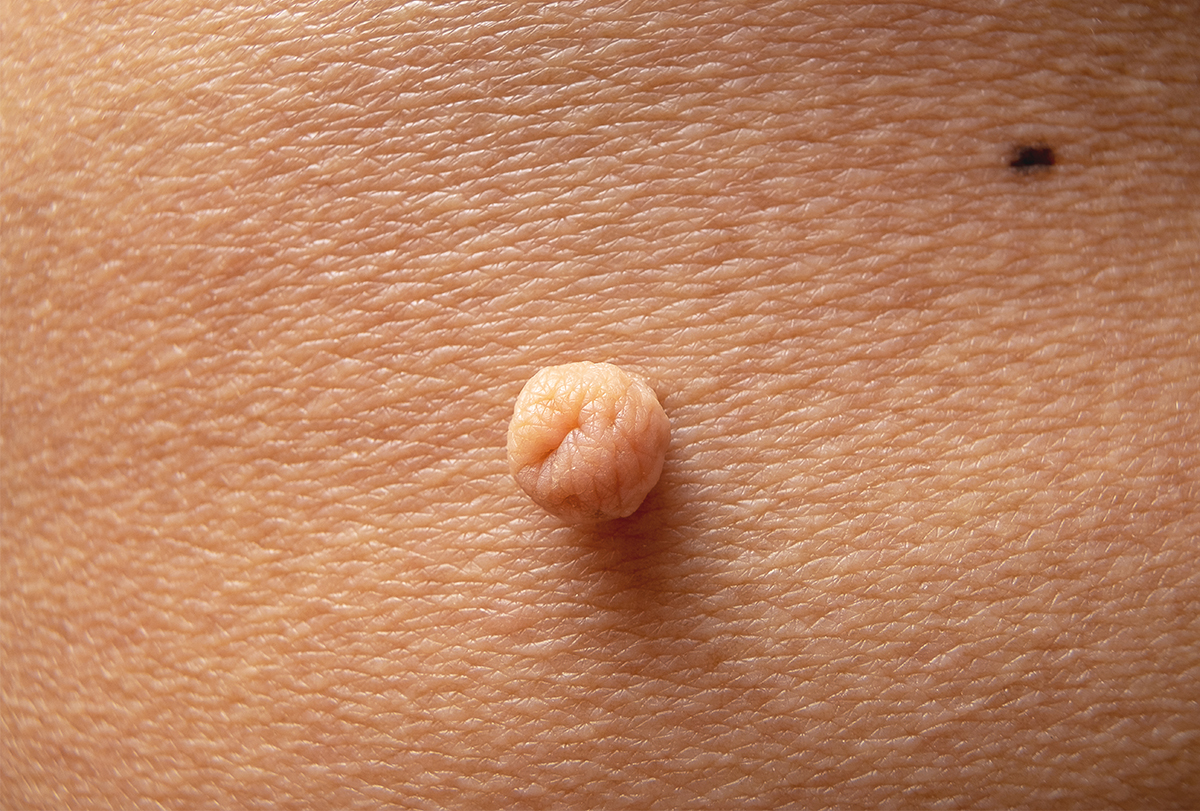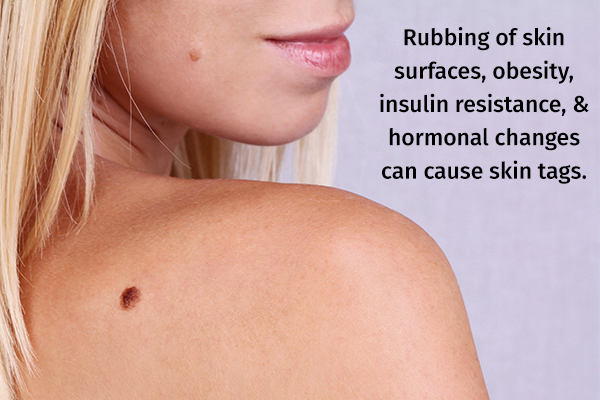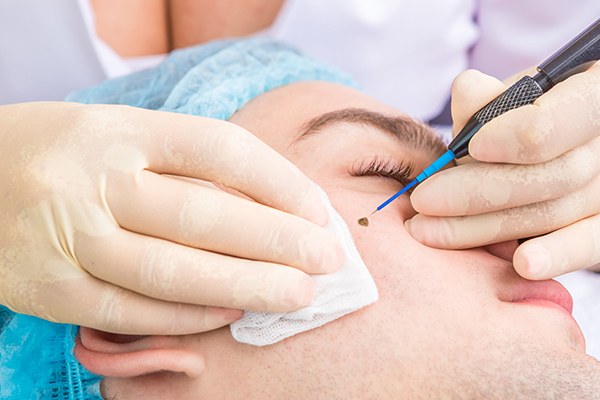In this article:
Skin tags, medically also known as acrochordons, refer to a loose accumulation of collagen fibers and blood vessels, surrounded by an epidermis, together forming a noncancerous skin growth that is attached to a fleshy stalk.

While skin tags do not possess any health risk or cause pain, they can often get caught in clothing or jewelry, causing discomfort.
How Common Are Skin Tags?
Around 50–60% of adults develop skin tags at least once in their lifetime. This is most common after the age of 40 years. Acrochordons are equally prevalent in both men and women. (1)
Causes of Skin Tags

Although the exact reason for the appearance of skin tags is unknown, they are thought to occur due to the following reasons:
1. Rubbing of skin surfaces
Sweating in the armpits, neck, and thighs can cause friction between skin surfaces, leading to the development of skin tags. (2)
2. Obesity
An increase in the levels of insulin, known as hyperinsulinemia, due to obesity can stimulate the production of growth factors that causes skin tag development. (3)(4)
3. Insulin resistance
Skin tags are often associated with insulin resistance diabetes, wherein the body fails to utilize the produced insulin. (5)
4. Hormonal changes
Skin tags are commonly seen in women with polycystic ovarian disease (PCOD) and pregnant women as a result of hormonal changes (6)(7) that stimulate the growth of the epidermal skin layer.
Skin tags are more frequent in the third trimester due to an increase in the hormonal levels and friction of the stomach.
Symptoms of Skin Tags
Skin tags generally appear as skin-colored or brown moles and usually measure 1–5 mm in size. (8) They are mostly found in areas of skin folds, including the neck, eyelids, underarm, groin, inner thighs, and torso.
A skin tag may first appear as a soft bump on the skin, which gradually develops into a hanging skin piece attached to a stalk. This enables the skin tag to move slightly, which poses a risk of blood clots if the tag gets twisted. However, while they may cause discomfort or irritation, skin tags are generally painless.
Treatment for Skin Tags

The treatment of skin tags involves their removal using either of the following procedures:
1. Cutting
The doctor may snip off the skin tag using surgical scissors or a scalpel. Alternatively, the mole may be shaved off the skin. For a mole with cells below the epidermal layer, the doctor may make a deep cut to remove the mole, often requiring stitches.
2. Freezing
Liquid nitrogen is used on the skin tag, which may leave a small blister that will heal on its own.
3. Burning
The skin tag may be burned off using a hot electric wire without any scar development. Since this may cause pain, the doctor may first give you anesthesia. The heat involved in this procedure helps prevent or minimize the bleeding.
4. Electrosurgery (diathermy)
High-frequency waves and electric currents are used to cut the skin tag. (9) The radio waves enhance the heat produced by the electric current. This procedure again helps reduce blood loss.
5. Ligation
The doctor ties a suture around the stalk of the skin tag to cut off blood supply, eventually causing the skin tag to fall off without leaving any scar. Since this may cause pain, the doctor may use an anesthetic to numb the area first. A bandage may be applied to control bleeding.
Diagnosing Skin Tags
The typical appearance of skin tags, characterized by softness, mobility, color, and presence of stalk, is easily identified by doctors. However, if the skin growth is firm and darkly or multicolored, your doctor may examine it physically and even conduct a biopsy if required.
Risk Factors
The following factors can predispose you to the development of skin tags:
- Human papillomavirus(HPV)
- Skin irritation and friction
- Family history of skin tags
- Acromegaly
- Type 2 diabetes
When to See a Doctor

While skin tags generally don’t require any medical attention, you may consult your doctor for their removal if you are bothered by their appearance, they cause irritation and discomfort, or they get caught in your clothes or jewelry.
Make sure to visit your dermatologist if you feel that the skin tag is hard to touch or bleeding. Consult an ophthalmologist if the skin tag is on or near your eyelid.
Final Word
Skin tags refer to excessive, painless benign skin growths. They are generally associated with diabetes, skin friction, and hormonal changes.
Consult a dermatologist for the removal of skin tags if they are discomforting or bothersome. Avoid cutting off the skin tags at home as it can cause bleeding and infection.

- Was this article helpful?
- YES, THANKS!NOT REALLY


